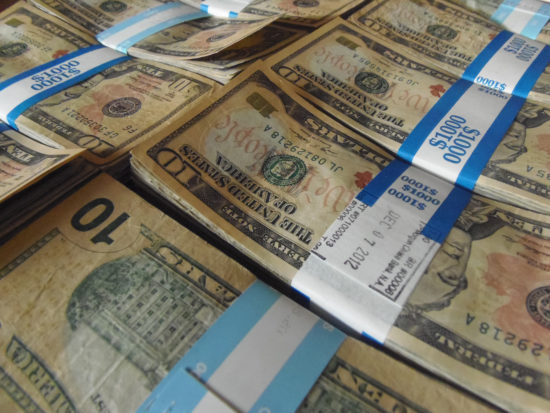
How can this be? Two words: compound interest. Compound interest is, in simple terms, interest that is building upon your interest. When you use a savings or investment platform such as a retirement fund or 401 (k), you have the opportunity to gain additional interest to your funds.
As the principal gains interest, your gain plus the original principal amount gain interest. The more it is compounded, the continuous the growth of interest is.
Saving $1 Million is a Science
To find out how much you will make from compound interest, there is a formula you can use:
- V=P(1+r/n)^nt
- Broken down, each part of the formula is:
- V=the value of the investment after the compounded interest
- P=principal investment amount
- r=annual interest rate
- n=number of times interest is compounded yearly
- t=the number of years the money is invested
- Broken down, each part of the formula is:
If this still seems a bit confusing for you, you can head over to The Calculator Site and use their automatic compound interest calculator to determine your total amount.
If you see a formula that is V=P(1+r)^t, this is a simplified version of the formula assuming interest is compounded once per year or per period instead of monthly or multiple times per period.
Let’s use this formula ourselves to see how long it will take to save $1 million.
Using the Formula to Save $1 Million
If we assume that you are contributing to a retirement fund with a 5% compound interest rate, and we base our formula on annually rather than multiple times per year, we will need to use the Internal Revenue Service’s 2016 annual contribution limit of $18,000.
Moving forward, here is what it would look like:
- V=$18,000(1+ 0.05)^1
- V=$18,009
This may not seem like a lot, but the longer the money hangs in the account, the more you make (as long as you keep investing). It is helpful to keep adding money every year as well. So, let’s try increasing it by several years with a continued annual contribution of $18,000 using the updated formula below and see what happens.
- V=$18,000(1+0.05)^26+$18,000 ((1+0.05)^(1+26)-(1+0.05))/0.05
- V=$1,030,046.38
As you can see, with the amounts and rates provided, it would take you 26 years to hit $1 million, assuming this would be a 401 (k) with a match plan. Without the additional contributions, it would take roughly more than 82 years to reach that point.
When exploring options for investment funds like this, you will want to not only consider the compounding interest but also the rate, the compounding period or frequency and annual contribution. These factors will help your investments go farther. What route you choose depends on how quickly you are hoping to grow your wealth.
For instance, if you have one penny that you doubled every year you would have approximately $5.3 million in 30 years. If you doubled it every day, you would have that same rough amount of $5.3 million in one month. While the total is the same, you can see the significant difference in frequency.
By starting your investments today, you can work your way to save $1 million sooner rather than later through patience, diligence and smart choices.
Do you currently invest? Are you benefiting from compound interest?
Photo: Flickr: Keith Cooper






Comments